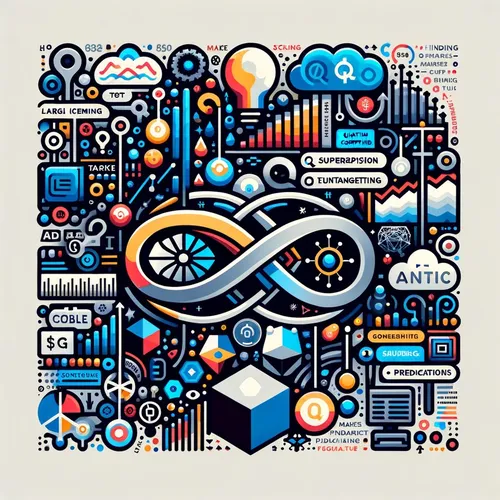Silicon CMOS Quantum Leap: Industrializing the Impossible
- Author
- Inception Point Ai
- Published
- Mon 15 Sep 2025
- Episode Link
- https://www.spreaker.com/episode/silicon-cmos-quantum-leap-industrializing-the-impossible--67767029
This is your Quantum Market Watch podcast.
Today’s a day for quantum history—if you’ve been tracking headlines, you may have caught the news: Quantum Motion just delivered the first full-stack quantum computer built using standard 300 mm silicon CMOS chip fabrication. I’m Leo, your Learning Enhanced Operator, and I can’t overstate what this means for our industry, for markets, and maybe, for the very mechanics of modern computing.
Picture me standing before a cleanroom, gown shimmering under fluorescent light, watching as engineers coax quantum bits—the wild, probabilistic particles at computing’s edge—into orderly logic gates across silicon wafers. This isn’t theoretical anymore. CMOS—those same chips anchoring your phone—are now hosting quantum logic. Quantum Motion’s announcement isn’t just an incremental improvement. It’s as if someone rewrote the laws of supply chains overnight, tearing down the barrier between quantum technology and mass manufacturing.
Now, how does this reverberate across industries? Let’s zoom in on the semiconductor sector. Historically, quantum computers demanded esoteric materials, cryogenic setups that evoke the chill of deep space, and fabrication processes far removed from conventional chip foundries. Not anymore. With standard silicon CMOS, quantum processing can piggyback directly onto the world’s most robust technological pipelines. Imagine Intel or TSMC stamping out quantum-enabled chips by the million—fast, affordable, and with ecosystem compatibility baked in.
We’re on the verge of a hybrid era. IBM’s collaboration with AMD, announced last week, is charting quantum-centric supercomputing for real-time climate simulations and material discovery. The quantum processing unit, or QPU, becomes as familiar as the GPU: a specialized accelerator nested in classical machines, recognized and leveraged seamlessly. Arvind Krishna of IBM recently claimed, “Quantum computing will simulate the natural world and present information in an entirely new way.” This alliance highlights the shift toward treating quantum as part of a broader computational arsenal.
Let’s get a bit dramatic—imagine quantum coherence as a symphony holding near-impossible harmonies just long enough to calculate the answer to problems that would mute classical computers for decades. I’ve held a dilution refrigerator coil, feeling the biting cold, listening for the qubit’s whisper. Now, thanks to Quantum Motion's breakthrough, some of those frigid constraints may melt away. Quantum states manipulated on CMOS chips open the door to applications in logistics, drug discovery, renewable energy, and—crucially—secure communications.
If you see parallels in current affairs, you’re not alone. As governments and big tech scramble to claim dominance, the race toward quantum self-reliance is accelerating globally. Japan is calling this 2025 “the first year of quantum industrialization.” Venture funding is cresting, and new quantum cryptography solutions are rolling out weekly. The barriers—error correction, infrastructure, talent—remain formidable, but each technical leap resets the game.
Quantum computing is finally tangible. It’s not just a curiosity; it’s industrializing, and today’s Silicon CMOS milestone is the bridge. Thank you for listening to Quantum Market Watch. If you have questions or suggestions, email me at [email protected]. Subscribe for more, and remember this has been a Quiet Please Production—check out quietplease.ai for more information.
For more http://www.quietplease.ai
Get the best deals https://amzn.to/3ODvOta
This content was created in partnership and with the help of Artificial Intelligence AI
